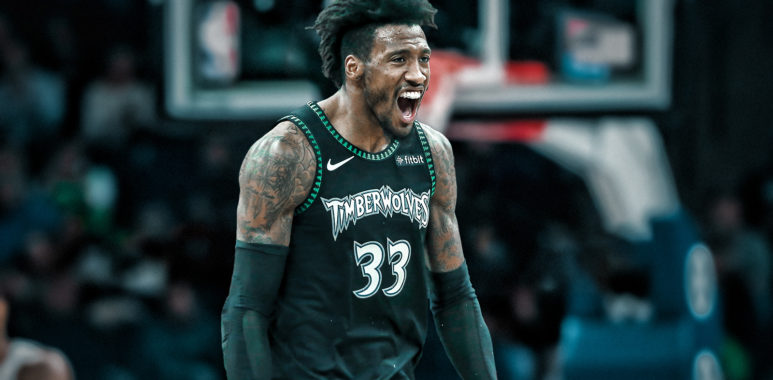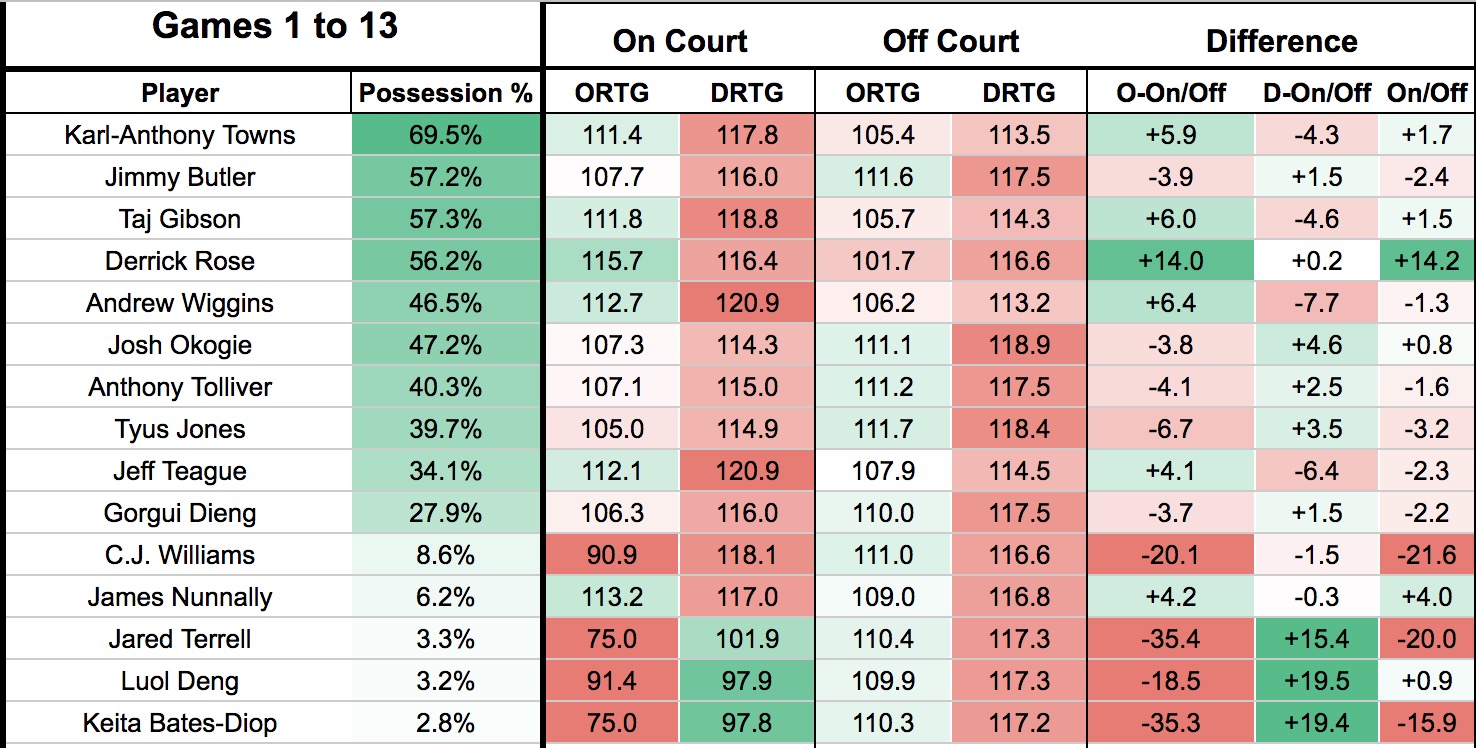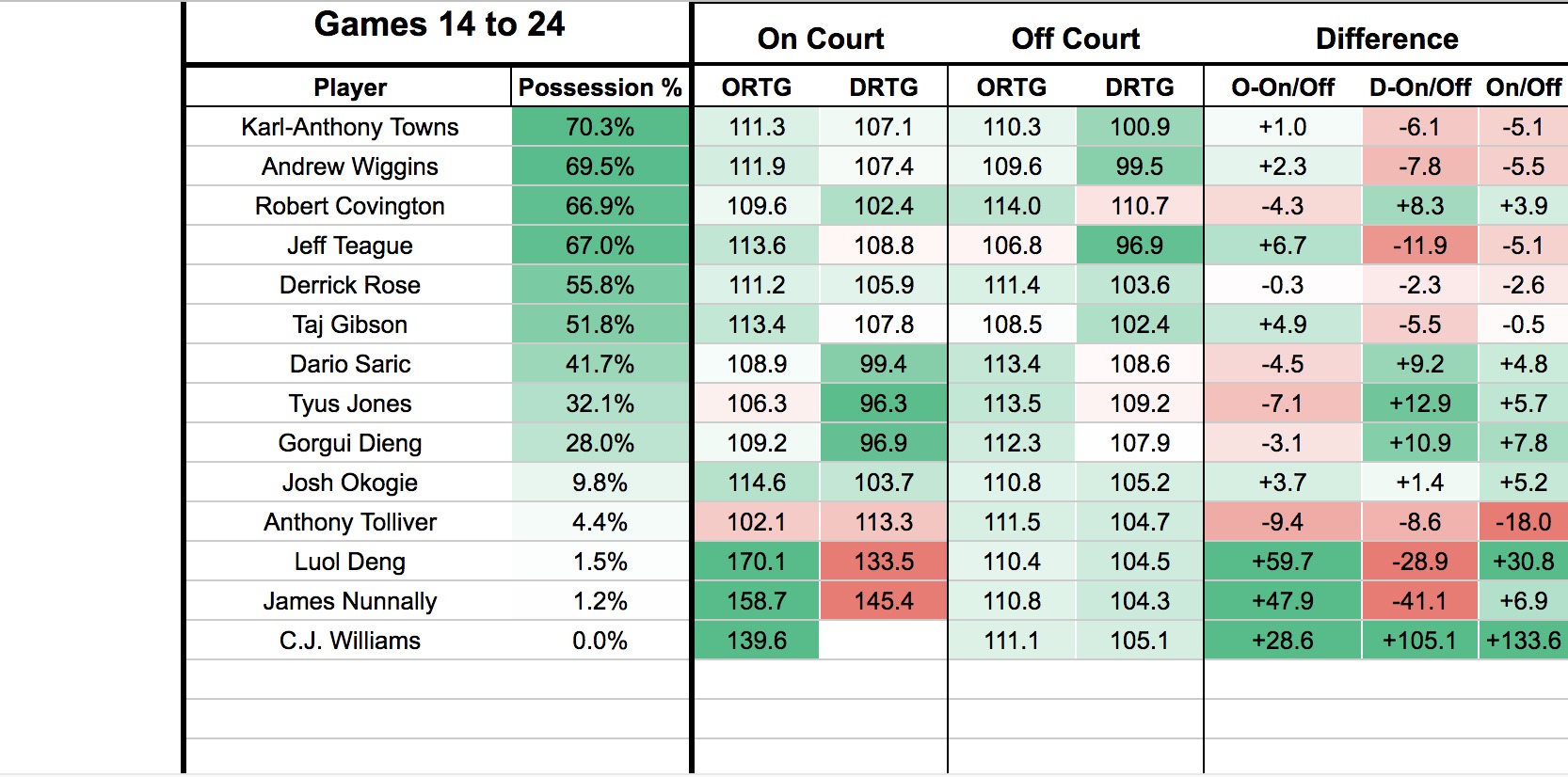
What makes the new Wolves defense different?
The first word addressed to the Wolves defensive breakthrough – since Covington and Saric were added to the fold – is “effort”.
Minnesota has held 10 out of 11 last opponents to 104 points or less, only 3 teams have given up 104 points or less per game this season, per NBA/stats


The luck adjusted on/off court difference before and after the trade show the great leap in efficiency on defense of Wiggins, Towns, and Dieng. They’ve never been historically solid on this end on the floor.
“Flexibility” would be more proper. Before dissecting the on/off ball improvements, how they’re handling half court and full court offense, one of the things you immediately notice is that nobody stick just on their defensive assignments, but they try to compensate every gap early in the plays.
“Moving on a string” is the other input given by good help-side defenders like Saric and Covington.
How do you totally reverse bad habits on transitions, high screen and rolls and 3 on 4 situations so briefly?
DETAILS
“The dunker” spot has always been a tough zone to guard by the Wolves perspective. The majority of the along the baseline passes were successfully delivered to the bigs. What’s the first threat to locate relative to the driver? Wolves defense often reacted lately to this question, leaving dump off passes for dunks.
In the last few games, they’ve been able to eliminate these easiest options by dropping.
In these short spaces, the weak side wing (generally Taj) will drop below the level of the ball. It’s helping a lot to prevent lobs, pocket passes or corner 3’s. Building a second layer of help with such good rotations is the last thing you would expect less than one month ago from Minnesota.
They improved a lot also in tagging off on the roll man when they double team the ball screens. Dieng developed an important role when it comes to showing and then recover on his man. He’s a little bit more active on his feet than Towns.
And if that’s not enough, Wolves are taking really care at the basket on transition defense. After November 11th, they’re allowing just 9.3 points on fast break points (3rd in the NBA in the last 12 games)
Giving no distinctive advantages to the rim runners, keep the heads up, communicate and make the floor narrow for the ball handler.
SWITCHING
Thibs tends not to switch on regular basis, but when comes the necessity to avoid slip screens by roll-and-cut guys like Capela and Jarret Allen or easy dribble penetrations from Harden, he relies much more on this defense than previous seasons.
THIS UPWARD TREND MAY HAVE SOME CHANCES TO LAST
Even if 12 games are not the strongest sample to confirm Wolves new defense, Towns and Wiggins are understanding for real how to fill the gap/plugs to stop dribble drives, how to be effective as helpers: this is a fact, despite the regression the Wolves may have in terms of results in the next two or three weeks.
Defense IQ is not set in stone, Wiggins is improving a lot of learning by watching from Covington’s lateral movements.
Thibs was already working on a more versatile defense as he told multiples times during the training camp in October. Whatever shape is going to take, it will be different.
